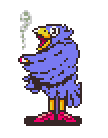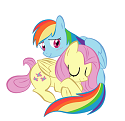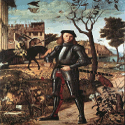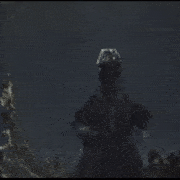|
Cast_No_Shadow posted:They came up with carpet death but never thought of hanging? Not a lot of trees on the steppes
|
|
|
|

|
| # ? May 9, 2024 08:10 |
|
Also hanging is so impersonal, crushing a bunch of hungarians under the weight of the general's platform has so much more style.
|
|
|
|
I think Jamuga, Temujin's blood brother turned rival, was known for boiling people alive. But even the other mongols thought this was a bit much.
|
|
|
|
Can anyone recommend a good book about Viking society?
|
|
|
|
This is an amazing thread, everyone's answers here are incredible. I just got done reading about the blood taboo and that poo poo is still blowing my mind. I'd never heard of anything like that but having read about it now its impact totally makes sense. Do you all think it has carried on at all into modern days? Mongols and gladiators aside, I wanted to ask, what do you all think is the overall most feared weapon on the medieval battlefield? I'm think some sort of siege weapon maybe? I want a professional opinion though, if someone will offer one. Edit for mongoloid grammar
|
|
|
|
I'm thinking there's some nuance lost on the blood taboo thing, given how much and how effectively they waged war.
|
|
|
|
I vaguely remember reading some muslim account where they're horrified by the mongols' slaughtering practices, which involved opening the animal up and stopping the heart to keep the blood from spilling out. Versus in muslim law where you have to cut the neck and drain all the blood out before you can eat it because blood is unclean. However, I really think trying to connect this to archery traditions is pushing it and just doesn't seem convincing to me. It just feels overbroad and without nuance, and seems to fall into the trap of assuming historical peoples were superstitious boobs and also overestimating the explanatory value of things we've heard just because of limited information. edit: found a ref: http://books.google.com/books?id=0StLNcKQNUoC&lpg=PA207&ots=RrOyBTY4a0&pg=PA207#v=onepage&f=false
|
|
|
|
Doc Science posted:Mongols and gladiators aside, I wanted to ask, what do you all think is the overall most feared weapon on the medieval battlefield? I'm think some sort of siege weapon maybe? I want a professional opinion though, if someone will offer one.
|
|
|
|
I kind of doubt siege weapons would generally be considered terrifying, given how long they take to assemble(or even construct) and target. The typical footsoldier likely wouldn't see one of those unless a fortified position was involved, and then they're used more against the fortification than the soldier.
|
|
|
|
I bet it was pretty terrifying if you were the guy picked to light the fuse.
|
|
|
|
Honestly I think the answer to this one transcends time periods: "The one pointed at you." Being clever aside though, fire. Fire weapons are usually the most feared regardless of time period. From fire arrows to fire pots to greek fire to white phosphorous, they are excellent for getting soldiers to go NOPE gently caress THIS and run away.
|
|
|
|
Doc Science posted:This is an amazing thread, everyone's answers here are incredible. I just got done reading about the blood taboo and that poo poo is still blowing my mind. I'd never heard of anything like that but having read about it now its impact totally makes sense. Do you all think it has carried on at all into modern days? Mongols and gladiators aside, I wanted to ask, what do you all think is the overall most feared weapon on the medieval battlefield? I'm think some sort of siege weapon maybe? I want a professional opinion though, if someone will offer one. Are you expecting us to say that rock flinging trebuchets and catapults or menacing looking hand-held weapons designed to pierce armour were somehow used as terror weapons? I'd say the most frightening weapon to a medieval soldier was guns. Because they were loud, and new. The most common method used to wear down morale would be attrition: disease, starvation, exposure and all manner of deprivation. Particularly in siege warfare, or from badly planned marches in inhospitable terrain. Fire-based weapons might have been possible, but it is extremely unlikely that barrels of burning oil or pitch based weapons were used: the cost would have been astronomical for that time. Oil could only be extracted from surface sources, and was extremely rare. Very sophisticated markets would have been needed to trade it. Tar was also used to fuel fire weapons, but again it is a rare commodity. Many exotic fire weapons of the ancient world were not available in the medieval era simply because international trade had collapsed with the fall of Rome. Amyclas fucked around with this message at 08:04 on Jul 2, 2013 |
|
|
|
veekie posted:I kind of doubt siege weapons would generally be considered terrifying, given how long they take to assemble(or even construct) and target. The typical footsoldier likely wouldn't see one of those unless a fortified position was involved, and then they're used more against the fortification than the soldier.  SCIENCE SCIENCE , which as we all know may as well be black wizardry. , which as we all know may as well be black wizardry.
HEY GUNS fucked around with this message at 08:19 on Jul 2, 2013 |
|
|
|
Amyclas posted:Are you expecting us to say that rock flinging trebuchets and catapults or menacing looking hand-held weapons designed to pierce armour were somehow used as terror weapons? Seems like grenades would have gone well as terror weapons. Loud, deadly and terrifying. I think China used those quite a bit, barrels of explosive crap used to break formations and morale.
|
|
|
|
Cream_Filling posted:I bet it was pretty terrifying if you were the guy picked to light the fuse. Even if you were the king.
|
|
|
|
I'd say firearms as well, maybe crossbows. Knights and other professional soldiers hated crossbows because after a week of training a peasant could kill them fairly easily with one, although I don't know if that disdain for crossbowmen translated to fear.
|
|
|
|
veekie posted:Seems like grenades would have gone well as terror weapons. Loud, deadly and terrifying. I think China used those quite a bit, barrels of explosive crap used to break formations and morale. A significant number of the Mongols' arrows were tipped with whistles, whose sole purpose was to scare the poo poo out of the enemy with their noise. 
|
|
|
|
Deteriorata posted:A significant number of the Mongols' arrows were tipped with whistles, whose sole purpose was to scare the poo poo out of the enemy with their noise. Not sole purpose, they were also used for signalling and for hunting. But they were awesome.
|
|
|
|
feedmegin posted:I'll say! The motte in motte and bailey is an artificial hill and the bailey is the outer layer of defence, after all. Yes and no. This is something I meant to deal with earlier, but there seems to be a common misunderstanding here that motte-and-bailey castles were exclusively wooden and that the 'bailey' is basically any permanently-enclosed area below the motte. I blame Medieval: Total War. Motte-and-bailey, really, refers to the overall shape of the castle, specifically the high motte and, on one side of it, a lower raised bailey. This is distinct from castles comprised of a motte fully encircled by a secondary wall, which seems to be what Le Puiset, for example, was in 1111. That motte-and-bailey is not a contemporary term and descriptions of castles are typically lacking in good detail for my period, makes identifying them difficult. Consequently, we don't *really* know how common they were. Sartana posted:To what extent was chivalry actually practiced? *snip* For any understanding of what chivalry was and how it functioned we must understand first that 'chivalry' has no firm definition, or indeed much of a definition at all. It is a term that is very hard to pin down, because it is tonal, contextual, and shifts with time. Maurice Keen's Chivalry provides us with something approaching a definition. Maurice Keen posted:Chivalry cannot be divorced from the martial world of the mounted warrior: it cannot be divorced from the aristocracy, because knights commonly were men of high lineage: and ... it very frequently carries ethical and religious overtones edit: For a better answer than that you should look at three books: Keen's Chivalry, Strickland's Chivalry and Warfare, and Kaeuper's Chivalry and Violence. The latter has some problems but it's still interesting. Amyclas posted:Slavery was completely outlawed in England at the end of the middle ages by Elizabeth 1 in 1569. Woah woah woah, hold up. Elizabeth I is most definitely not part of the Middle Ages. Even generous parameters for the Middle Ages put you almost 70 years off. Amyclas posted:Fire-based weapons might have been possible, but it is extremely unlikely that barrels of burning oil or pitch based weapons were used: the cost would have been astronomical for that time. Oil could only be extracted from surface sources, and was extremely rare. Very sophisticated markets would have been needed to trade it. Tar was also used to fuel fire weapons, but again it is a rare commodity. Ahaha did you even read the link you posted? Fire-based weapons were used throughout the Middle Ages. Red-hot iron, flaming missiles, and of course fuckin Greek Fire. Off the top of my head I can think of 6 sieges in a 50 year span in northern France that used fire as a potent weapon. Once fire was employed by catapults flinging 'flaming dross', as Orderic calls it, another it was red-hot arrow points, two were wagons stacked up with flammables and covered in grease to burn gates down, and two are just plain old fire from torches. Pitch was really common as an adhesive and a sealant for boats, buckets, etc. I don't know where you get the idea it was astronomically expensive. Rodrigo Diaz fucked around with this message at 19:53 on Jul 2, 2013 |
|
|
|
Rodrigo Diaz posted:Ahaha did you even read the link you posted? Fire-based weapons were used throughout the Middle Ages. Red-hot iron, flaming missiles, and of course fuckin Greek Fire. Off the top of my head I can think of 6 sieges in a 50 year span in northern France that used fire as a potent weapon. Once fire was employed by catapults flinging 'flaming dross', as Orderic calls it, another it was red-hot arrow points, two were wagons stacked up with flammables and covered in grease to burn gates down, and two are just plain old fire from torches. Pitch was really common as an adhesive and a sealant for boats, buckets, etc. I don't know where you get the idea it was astronomically expensive. Speaking of chemical weapons, this book is too early for the Middle Ages, but it does rule. http://www.amazon.com/Greek-Poison-Arrows-Scorpion-Bombs/dp/158567348X
|
|
|
|
Confusion arises about the words "pitch" and "tar" because in the modern world people rarely encounter anything other than the petroleum-based substances that now carry those names. The medieval pitch and tar are substances derived from pine and other coniferous trees. They have very different properties than the bituminous tar we are familiar with. Pine tar has a much lower viscosity than bituminous tar and flows at relatively low heats. They were very common in the middle ages as they were readily available in forests and they had a thousand and one uses. So in the middle ages, if you hear "pitch" or "tar" be aware they're talking about cooked pine sap, a substance that while still highly flammable was altogether less nasty and difficult than bituminous tars. For example, when I heard of tarring and feathering as a kid I had a hard time understanding how people survived tarring and feathering, seeing as bituminous tar has to be heated to lethal temperatures just to be poured, and so viscous it would suffocate a man if you poured it over him. This confusion was not improved by an on-screen depiction of tarring and feathering in some movie where it was clearly bituminous tar. It suddenly made sense when I found out that before the 20th century tar was a completely different substance that would flow at around 100 degrees Fahrenheit and was thin enough that victims could open their mouths even after being coated.
|
|
|
|
Arglebargle III posted:Confusion arises about the words "pitch" and "tar" because in the modern world people rarely encounter anything other than the petroleum-based substances that now carry those names. The medieval pitch and tar are substances derived from pine and other coniferous trees. They have very different properties than the bituminous tar we are familiar with. Pine tar has a much lower viscosity than bituminous tar and flows at relatively low heats. They were very common in the middle ages as they were readily available in forests and they had a thousand and one uses. So in the middle ages, if you hear "pitch" or "tar" be aware they're talking about cooked pine sap, a substance that while still highly flammable was altogether less nasty and difficult than bituminous tars. Wait, pitch doesn't come from trees? 
|
|
|
|
Smoking Crow posted:Wait, pitch doesn't come from trees? It does, but bituminous tar, as used in road works, does not. He said this in that very post. Has running head first into a wall become one of the criteria for posting or something? Rodrigo Diaz fucked around with this message at 03:10 on Jul 3, 2013 |
|
|
|
We always looked for pitch pine in Scouts because it would burn wet. That's what I always thought pitch was.
|
|
|
|
Smoking Crow posted:We always looked for pitch pine in Scouts because it would burn wet. That's what I always thought pitch was. Pitch is cooked pine resin. Pitch pine has lots of resin which (surprise surprise) can be cooked down into pitch. Am I getting through to you?
|
|
|
|
Yeah, I'm dumb. Sorry.
|
|
|
|
The guy who posted about how tar and pitch and oil would be amazingly expensive because they're hard to extract even from surface sources is clearly confusing modern colloquial meanings of those words with the medieval meanings. You're obviously a special snowflake who knows all about pine pitch but this other guy is confused, I used to be confused about it, so I thought I'd post an explanation. Sorry you're so great. I have to say it was really disturbing to watch that historically inaccurate depiction of tarring and feathering as a kid with a decent understanding of what sorts of things can kill people. It was clearly supposed to be* really thick, steaming-hot bituminous tar being poured over these guys' heads with stupid glub-glub sound effects. The people on screen treated it like a joke and I was sitting there horrified like "they can't breathe! they're burning! oh god this is horribly they're dying!" but then they didn't die and it was all a joke and man that was hosed up. At no point did they show any plausible method of allowing the victims to breathe, but hey all in good fun I guess? Yikes. *obviously it was fake and they didn't really kill two people on camera Arglebargle III fucked around with this message at 03:41 on Jul 3, 2013 |
|
|
|
Rodrigo Diaz posted:Pitch is cooked pine resin. Pitch pine has lots of resin which (surprise surprise) can be cooked down into pitch. Am I getting through to you? Dude, relax. Tone down the hostility a ton. The guy was just trying to learn something about medieval history in the medieval history thread and you go attack him because you knew something he didn't. Take a breather.
|
|
|
|
Well that answers how they got pitch before they worked with fossil fuels I guess. Didn't realize it was made of pine sap before, but given how flammable some resins can be, I should have known. Wonder what they'd have done with some australian vegetation...
|
|
|
|
Hydrolith posted:I'm still working my way through the thread, so apologies if this has been asked before. I can't say much for the rest of Europe but the Irish Kerns would be what you are looking for. During the middle ages the Irish armies consisted of mainly kerns (skirmishers) and gallowglass (mercenary heavy infantry) along with some noble cavalry. Kerns were lightly armored, fast, and favoured using darts/javelins to bows. They carried out cattle raids against other local chieftains and whatnot but never saw action outside of Ireland due to it being a patchwork of warring states. That being said, once the Normans invaded the kerns were such a pain in the rear end that the Normans had to pass a law requiring that trees be cleared from roadsides to prevent ambushes.
|
|
|
|
Byzantium also used light javelin soldiers, greek peltast and akontistai soldiers was still a common role for the lower classes to be drafted into.
|
|
|
|
I'm also just working my way through the thread, but I have a question. I had heard that as heavier metal armors (mail, scale, plate, ect) became more common that bludgeoning weapons such as maces, hammers, and picks became more common (relatively) because they could break bones and cause internal bruising and bleeding without needing to pierce the armor itself. I also heard that it was possible to crunch a breastplate to make it impossible to bend or twist the torso, and even make breathing difficult or impossible. Is any of this true, or just BS and videogame logic?
|
|
|
|
I know volley fire was A Thing in gunpowder warfare, but did pre-gunpowder bowmen or crossbowmen likewise practice something like it, or was it all fire-at-will with them?
|
|
|
|
Odobenidae posted:Irish Kerns never saw action outside of Ireland This isn't true, they were pretty common mercenaries throughout Northern Europe. Albrecht Durer drew this when he saw them in Nuremberg in the early 15th century. 
|
|
|
|
Who What Now posted:I'm also just working my way through the thread, but I have a question. I had heard that as heavier metal armors (mail, scale, plate, ect) became more common that bludgeoning weapons such as maces, hammers, and picks became more common (relatively) because they could break bones and cause internal bruising and bleeding without needing to pierce the armor itself. I also heard that it was possible to crunch a breastplate to make it impossible to bend or twist the torso, and even make breathing difficult or impossible. Is any of this true, or just BS and videogame logic? I know a lot of what is traditionally (at least among the D&D crowd) thought of as blunt weapon are actually piercing weapons. For example, if you look more closely at a flanged mace, a very common design, you'll realize that the flanges are actually designed for piercing. Same for warhammers, the warhammer is nothing like the maul that fantasy artists often draw, it's a very small striking head and a spike on the reverse side for armor piercing. Ofaloaf posted:I know volley fire was A Thing in gunpowder warfare, but did pre-gunpowder bowmen or crossbowmen likewise practice something like it, or was it all fire-at-will with them? Bowmen shot as a unit, crossbowmen I don't know.
|
|
|
|
Arglebargle III posted:Bowmen shot as a unit, crossbowmen I don't know. Yeah, I would think it was some of each. Mounted bowmen could close on a target pretty quickly and get close enough for a good shot on a single target. There were certainly massed bowmen who would just rain arrows from the sky without a specific target. I suspect the latter was more common.
|
|
|
|
Wouldn't even individual targets benefit from volley fire? It's not like volleying meant you pointed your bow in their general direction and loosed, you just synchronized your attack for maximum impact and payoff, by firing in a volley the odds of your arrow finding someone was maximized even if you missed your primary target, and the morale effects of a wall of pointy death coming from the sky would be greater too.
|
|
|
|
Speaking of warhammers, how common were two-handed axes and maces? The Danish axe is pretty famous, but I can't think of any others aside from lochaber axes and bardiches, which as I understand were more like polearms than axes. I'm not sure I've even seen a historical two-handed mace before. For that matter, are there any surviving manuscripts on the use of axes/maces of any kind? I've only seen ones for longswords, sword-and-buckler combat, and halberds.
|
|
|
|
Might not be technically medieval, but... What sort of soldier is the guy on the left in this french political cartoon from the late 1600s? The guy labeled "dragon missionary" or maybe "missionary of Satan (dragon?)"?. I'm assuming he's a ridiculous stereotype, but of what or who?  Also, not really sure where to ask this (if there's a better thread for it please tell me), but does anyone know if this cartoon is translated somewhere? I'm guessing its from the french wars of religion. The weird thing is that it seems like the guy on the left is a labeled a heretic, but then the cartoon seems to trying to get you to sympathize with him.
|
|
|
|

|
| # ? May 9, 2024 08:10 |
|
Beaumains posted:http://en.wikipedia.org/wiki/Mabinogion It's important to note that they (the knights) were able to comb the giant's hair only because they first retrieved hair care supplies stashed in an angry boar's mane. But to have a chance at the boar, the protagonist needed to get the services of the knights of the round table. To do this he goes to Camelot and gets a haircut from King Arthur, which means that King Arthur owes him the services of all the knights (and merlin too) forever. Basically what I'm saying is that its hair all the way down 
Dedhed fucked around with this message at 13:42 on Jul 6, 2013 |
|
|
























